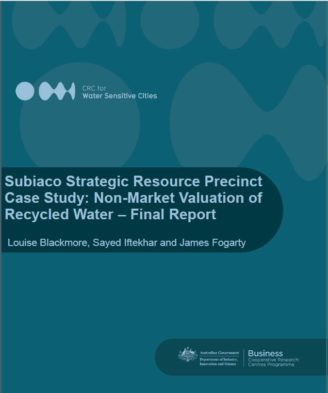Subiaco strategic resource precinct case study: Non-market valuation of recycled water – final report
Abstract
This study explored the possible role of recycled water in transforming Subiaco Wastewater Treatment Plant (WWTP) into a Strategic Resource Precinct (SRP). Subiaco WWTP is one of the largest treatment plants in Western Australia, currently servicing a catchment of around 240,000 people that includes the Perth Central Business District. The SRP concept re-imagines WWTPs as water resource recovery plants (WRRPs) that generate valuable resources, as opposed to dealing with waste, and encourages a land use planning approach that recognises and facilitates linkages between the plant and land users around the precinct. Despite the benefits it could provide, the SRP concept has not yet been thoroughly tested, a knowledge gap that this case study seeks to address.
We investigated the extent to which recycled water use by non-residential land users in the suburbs surrounding Subiaco WWTP could contribute to the creation of an SRP. Specifically, our objectives were to:
- investigate current and future non-residential land use in the suburbs surrounding Subiaco WWTP’s potential Strategic Resource Precinct, and understand the relationship between land use and water availability
- investigate current and future non-residential water use in the suburbs surrounding Subiaco WWTP’s potential Strategic Resource Precinct, and identify opportunities for substituting recycled water for other water sources
- estimate current willingness-to-pay for recycled water for non-residential use in the suburbs surrounding Subiaco WWTP’s potential Strategic Resource Precinct
- explore future demand for recycled water for non-residential use in the suburbs surrounding Subiaco WWTP’s potential Strategic Resource Precinct under three groundwater allocation reduction scenarios.
